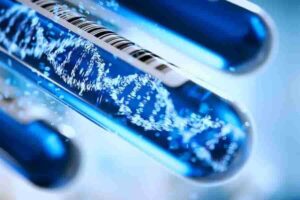
health developments
LDL vs. HDL: Understanding the Difference Between ‘Good’ and ‘Bad’ Cholesterol
Cholesterol is a fatty substance that is found in the blood and is essential for the functioning of the body. However, there are two types of cholesterol, LDL (low-density lipoprotein) and HDL (high-density lipoprotein), which are often referred to as “bad” and “good” cholesterol, respectively. In this article, we will explore the differences between LDL and HDL cholesterol, the effects they can have on the body, and how to maintain healthy levels of both types of cholesterol.
LDL Cholesterol
LDL cholesterol is often referred to as “bad” cholesterol because it can cause a buildup of plaque in the arteries, which can lead to cardiovascular disease. When there is too much LDL cholesterol in the blood, it can stick to the walls of the arteries and form a thick, hard deposit called plaque. Over time, the buildup of plaque can narrow the arteries, making it harder for blood to flow through them. This can lead to a variety of health problems, including heart attack, stroke, and peripheral artery disease.
HDL Cholesterol
HDL cholesterol, on the other hand, is often referred to as “good” cholesterol because it helps remove LDL cholesterol from the arteries and carries it back to the liver, where it can be broken down and eliminated from the body. HDL cholesterol is also believed to have anti-inflammatory properties, which can help reduce the risk of cardiovascular disease.
Maintaining Healthy Cholesterol Levels
Maintaining healthy levels of both LDL and HDL cholesterol is important for overall health and wellness. The American Heart Association recommends that adults over the age of 20 have their cholesterol levels checked every four to six years. A cholesterol test, also known as a lipid panel or lipid profile, measures the levels of LDL and HDL cholesterol in the blood, as well as triglycerides, another type of fat in the blood.
If your LDL cholesterol levels are too high, there are a number of lifestyle changes you can make to help lower them. These include:
Eating a heart-healthy diet: This means limiting your intake of saturated and trans fats, which can raise LDL cholesterol levels, and increasing your intake of fruits, vegetables, whole grains, lean proteins, and healthy fats.
Exercising regularly: Regular physical activity can help raise HDL cholesterol levels and lower LDL cholesterol levels.
Quitting smoking: Smoking can raise LDL cholesterol levels and lower HDL cholesterol levels, so quitting smoking is an important step in maintaining healthy cholesterol levels.
Maintaining a healthy weight: Being overweight or obese can raise LDL cholesterol levels and lower HDL cholesterol levels, so maintaining a healthy weight is important for overall health and wellness.
In addition to lifestyle changes, your doctor may also recommend medication to help lower your LDL cholesterol levels. There are several types of cholesterol-lowering medications, including statins, which are the most commonly prescribed type.
In conclusion, LDL and HDL cholesterol are two different types of cholesterol that play important roles in the body. Maintaining healthy levels of both LDL and HDL cholesterol is important for overall health and wellness, and there are a number of lifestyle changes you can make to help achieve this goal. If you are concerned about your cholesterol levels, talk to your doctor, who can help you develop a plan to achieve and maintain healthy cholesterol levels.







